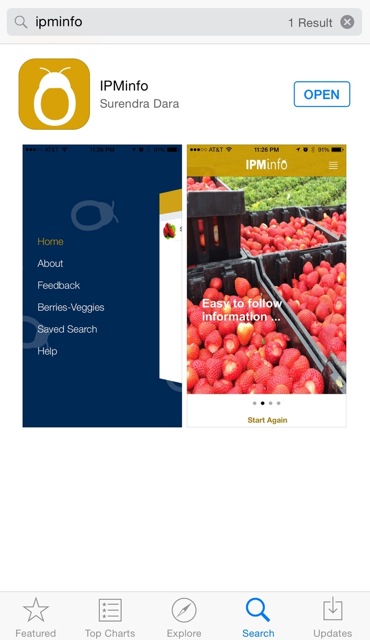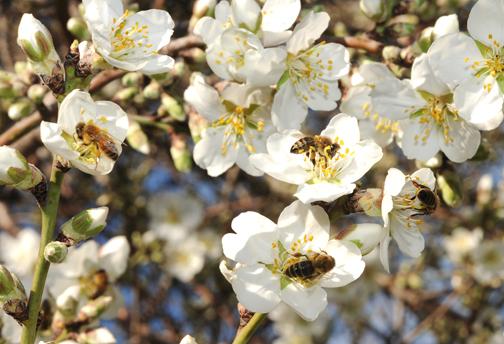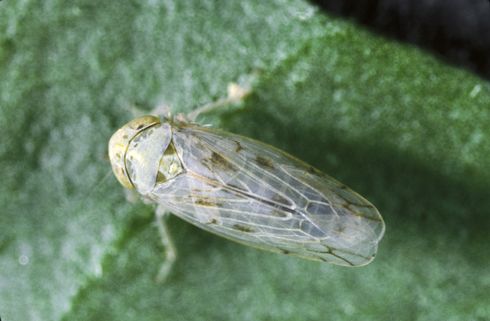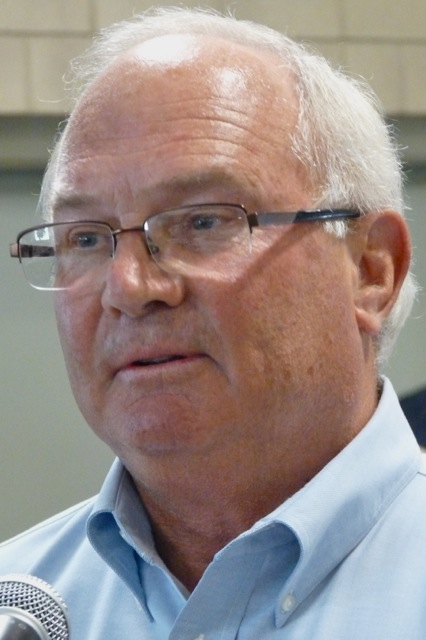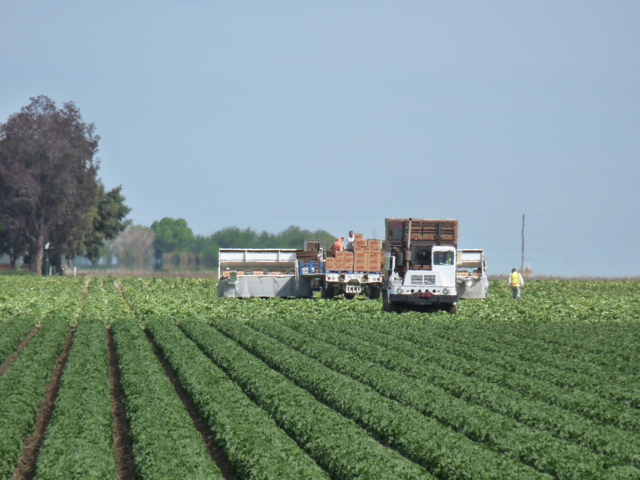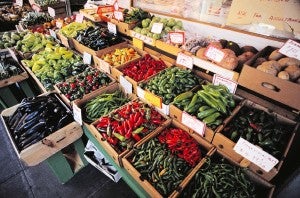New IPM App
 Free Download of IPM Info App Now Available
Free Download of IPM Info App Now Available
Extending research information is a critical service of Cooperative Extension. Using modern technology and channels of communication is important to successfully convey that information to growers, PCAs, and other key players in the agriculture industry.
Smartphone usage has become widespread and smartphone applications are becoming popular in agriculture as they provide quick and easy access to information, help growers monitor a diverse set of variables, and facilitate decision making. However, there have been no such applications to assist California strawberry and vegetable growers.
In an effort to provide simple access to important pest and disease information for various crops readily available to the agricultural industry , Surendra K. Dara, UC Cooperative Extension San Luis Obispo County, developed IPMinfo—the first IPM information app from University of California.
First released in December, 2014 and updated in April, 2015, this new IPM app is now available for free download for iPhones on App Store, featuring extensive pest and disease information generated by Dara’s strawberry and vegetable extension program. With one-touch access, agricultural professionals can learn the biology, symptoms of plant damage, and management options for pests and diseases.

